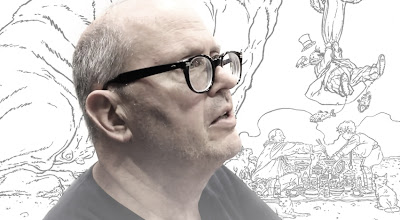Guillermo del Toro is one of the finest ‘visual storytellers’ working in cinema today, in no small part as a result of his capacity to create imagery that seizes the mind and provokes a powerful emotional reaction. Del Toro’s design sensibilities are brilliantly personified by the creatures he creates, and into which he breaths life by utilizing metaphor and myth.
In this post, I would like to draw attention to an artistic collaboration Guillermo del Toro had with sculptor Norman Cabrera on “Hellboy II: The Golden Army".
When it came time for Del Toro’s interpretation of “Hellboy” to come face to face with his “Angel of Death”, Del Toro created a truly awe inspiring being that is simultaneously horrifying and breathtakingly beautiful in its design. Del Toro asserts, in the films audio commentary, that in this particular world every character has a specific “Angel of Death”. In order to create the "Angel of Death" for “Hellboy”, Guillermo del Toro began by sketching. Below is a Del Toro sketch of the character.
In the sketch, we can already see some of the essential visual notes having been roughed out. The two sets of wings, the eyes on the wings, and the nose and mouth of a cloaked skeleton-like face. In order to bring this concept to full fruition Del Toro collaborated with sculptor and artist Norman Cabrera, who brought a level of detail to the character that allows it to exist in a live action movie. Cabrera must extrapolate from the initial concept and flesh out the director’s vision, and we are fortunate that there is video record of a key series of interactions in that process, seen below.
Norman Cabrera’s first pass on the character clearly displays his mastery of the materials and technical brilliance, and it is hard not to fall in love with the sculpture he created. Guillermo del Toro’s belief in the power of simplicity drives him to do what many of us would find unnerving. Realizing that the head's design will be served with a visual statement that is more austere, he scrapes away the detail on the upper portion of the face and discusses with Cabrera the possibility of flattening it as well as bringing it forward. When the design is revised, the detail is scaled back again in order to create what amounts to the visual equivalent of a crescent moon-shaped empty plate, and that simplicity strengthens the design.


















